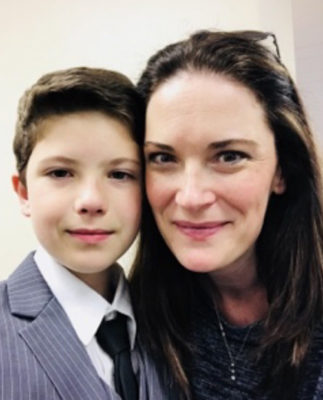How Nancy Survived Morton’s Neuroma Pain

Nancy felt like she was walking on a pebble and endured fiery pain in the ball of her foot. She has a condition called Morton’s neuroma. The digital nerve passes under the ligament connecting the toe bones in the forefoot. Morton’s neuroma is a thickening of the tissue that surrounds the digital nerve. It usually develops between the third and fourth toes in response to irritation, trauma or excessive pressure.
Symptoms include burning pain in the ball of the foot that may radiate into the toes, intensified pain with activity and numbness in the toes. The incidence of Morton’s neuroma is 8 to 10 times greater in women than in men. High-heeled and tight, narrow shoes can aggravate the condition by compressing the toe bones and pinching the nerve. Sports that require tight fitting shoes, such as skiing, are more likely to cause Morton’s neuroma. High impact activities, hiking or running, can put pressure on the ligament and cause thickening of the nerve.
Nancy did not wear pointed-toed, high-heels, but she did wear ski and hiking boots in Colorado. During an 11-mile hike close to Vail called Two Elk, her Morton’s neuroma was excruciatingly painful. In order to finish the hike, she hobbled in her sock over the rocky trail. She relieved the symptoms temporarily by removing her boot, massaging her foot and soaking it in a mountain stream.
The best time to see your orthopedic specialist at DOC is early in the development of symptoms because early diagnosis of a Morton’s neuroma lessens the need for surgery. After the Colorado hike, Nancy went to DOC. During the examination, the DOC physician felt for a palpable mass between the toe bones. Range of motion tests ruled out arthritis or joint inflammation and X-rays eliminated a stress fracture or arthritis of the joints diagnosis. Nancy definitely has Morton’s neuroma.
Her initial treatments were nonsurgical:
- Changes in footwear. Shoes with low heels and a wide toe-box. Nancy prefers Danskos.
- Icing. Icepack on affected area or cold mountain stream if available.
- Orthotic devices. Custom shoe inserts.
- Anti-inflammatory drugs. Ibuprofen to reduce pain and inflammation.
- Injection therapy. One or more injections of a corticosteroid medication.
Nancy benefited from the DOC suggestions, including injection therapy. “DOC gave me an injection before I backpacked for 21 days in Nepal and another injection prior to a three-week trek in Patagonia. A cortisone shot was the perfect solution for me to be pain free and continue my active lifestyle.”
Nonsurgical treatments provide relief in over 80 percent of people with Morton’s Neuroma. If conservative treatment does not relieve your symptoms, your DOC orthopedic surgeon may discuss surgical treatment options with you.
For more information on the cost of care, click here.



